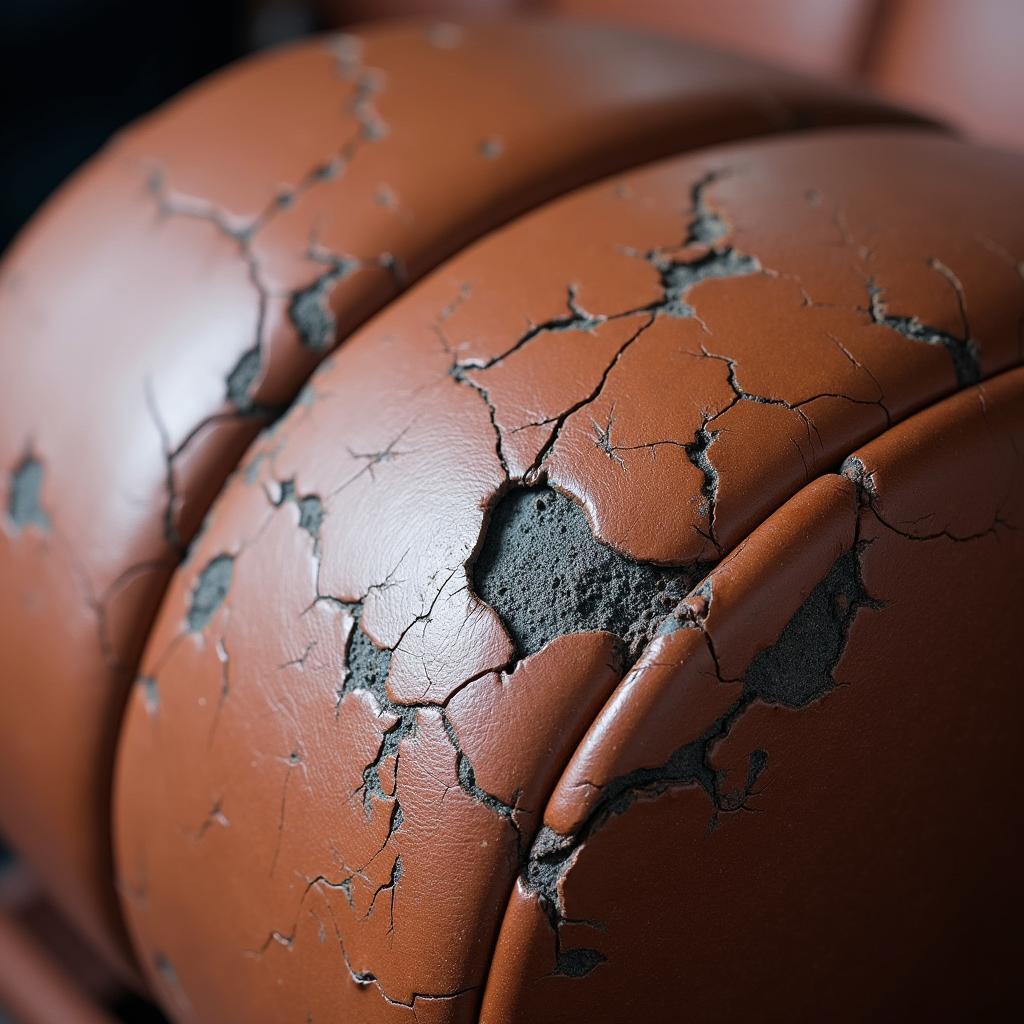Leather car seats instantly elevate the look and feel of any vehicle, offering a luxurious and comfortable driving experience. However, over time, wear and tear can take a toll on even the highest quality leather, leaving it looking cracked, faded, or scratched. That’s where knowing how to repair leather car seats comes in handy. With a bit of knowledge and some elbow grease, you can revitalize your leather interior and restore it to its former glory.
Understanding the Importance of Leather Car Seat Repair
Ignoring minor damage to your leather car seats might seem harmless at first, but over time, these small imperfections can escalate into bigger problems. Cracks can deepen, scratches can become more prominent, and the overall structural integrity of the leather can weaken.
Timely repair not only maintains the aesthetic appeal of your car’s interior but also helps preserve its value. A well-maintained leather interior is a strong selling point if you ever decide to trade in or sell your vehicle.
Common Leather Car Seat Issues and Their Solutions
Before you jump into repairing your leather car seats, it’s crucial to identify the specific issues you’re dealing with. Here are some of the most common problems and how to address them:
1. Cracks and Tears:
Cracks often develop due to prolonged exposure to sunlight and heat, while tears can result from sharp objects or rough use.
Solution: Minor cracks can often be repaired using a high-quality leather filler followed by a color-matched leather dye. Larger tears might require patching or professional upholstery services.
For a step-by-step guide on repairing cracks, check out our article on how to repair leather car seat cracks.
2. Scratches and Scuffs:
These are usually superficial and affect the top layer of the leather.
Solution: A leather cleaner and conditioner can often minimize the appearance of light scratches. For deeper marks, a leather recoloring balm or dye might be necessary.
Learn more about tackling scratches effectively in our dedicated guide: how to repair leather car seat scratch.
3. Fading and Discoloration:
Exposure to UV rays and general wear can cause the leather to lose its color vibrancy.
Solution: Applying a leather conditioner with UV protection regularly can help prevent fading. If the damage is already done, consider using a leather color restorer or dye to bring back the original shade.
4. Stains and Spills:
Leather is porous and can easily absorb liquids, leading to unsightly stains.
Solution: Act quickly! Blot spills immediately with a clean cloth. For stubborn stains, use a dedicated leather cleaner or a mild soap solution. Avoid harsh chemicals or abrasive cleaners.
“When choosing products for leather car seat repair,” advises renowned automotive detailing expert, John Miller, “always opt for those specifically designed for automotive leather. These products are formulated to address the unique demands of this type of leather and will yield the best results.”
DIY vs. Professional Leather Car Seat Repair
Deciding whether to tackle leather car seat repair yourself or hire a professional depends on the severity of the damage and your comfort level.
DIY Repair: Suitable for minor cracks, scratches, fading, and stains. Numerous DIY kits and products are available, making it a cost-effective option.
Professional Repair: Ideal for deep tears, extensive damage, or if you’re not confident in your DIY skills. Professionals have the expertise, tools, and materials to deliver high-quality repairs.
Cost Considerations for Leather Car Seat Repair
DIY Repair: Costs can range from $20 to $100, depending on the products and tools needed.
Professional Repair: Prices can vary widely based on the extent of the damage, the type of leather, and the location. On average, expect to pay anywhere from $100 to $500 or more for professional repairs.
To get a better understanding of potential costs, take a look at our comprehensive guide on how much does it cost to repair leather car seat.
Prolonging the Life of Your Repaired Leather Car Seats
Once you’ve successfully repaired your leather car seats, you’ll want to keep them looking their best for as long as possible. Here are some essential tips:
- Regular Cleaning and Conditioning: This is crucial for maintaining the leather’s suppleness, preventing drying, and minimizing the appearance of imperfections. Use a pH-neutral leather cleaner and a high-quality conditioner.
- UV Protection: Park your car in the shade whenever possible or use a sunshade to block harmful UV rays, which can fade and damage leather over time.
- Prompt Spill Cleanup: As mentioned earlier, address spills immediately to prevent them from setting into the leather.
- Avoid Harsh Chemicals and Abrasives: Always choose cleaning products specifically designed for automotive leather.
Conclusion: Invest in Leather Car Seat Repair for a Luxurious and Comfortable Ride
Repairing your leather car seats is an investment worth making. By addressing damage promptly and adopting preventative measures, you can extend the lifespan of your leather interior, maintain the value of your vehicle, and most importantly, enjoy the luxurious and comfortable driving experience that only well-maintained leather seats can provide.
FAQs
1. Can I use regular household cleaners on my leather car seats?
No, it’s not recommended to use household cleaners on leather car seats. These cleaners often contain harsh chemicals and abrasives that can damage the leather, leading to dryness, cracking, and discoloration.
2. How often should I condition my leather car seats?
It’s generally recommended to condition your leather car seats every three months or as needed, depending on the climate and usage. If you live in a hot, sunny climate or frequently park your car outdoors, you might need to condition them more often.
3. Can I repair a tear in my leather car seat myself?
While minor tears can sometimes be repaired using DIY kits, larger or more complex tears are best handled by professional upholstery services.
4. What’s the best way to remove pet hair from leather car seats?
A lint roller, vacuum cleaner with a brush attachment, or a slightly damp microfiber cloth can effectively remove pet hair from leather car seats.
5. How can I prevent my leather car seats from getting too hot in the summer?
Parking in the shade, using a sunshade, and cracking the windows slightly for ventilation can help prevent your leather seats from getting excessively hot.
Need help with your leather car seat repair?
Contact us today via WhatsApp: +1(641)206-8880 or email us at: [email protected]. Our team of experts is available 24/7 to assist you!



